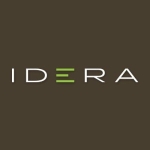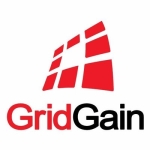What is most valuable?
Caching: It allows applications to cache objects and application-specific data in an in-memory data grid, which provides substantial gain in performance. In my experience, while working on customers’ solutions where performance is a key requirement, along with robustness and stability needs, I have always found Oracle Coherence as the best solution for integrating with different Oracle products and caching data for application-specific needs.
How has it helped my organization?
I have worked on different projects that sometimes demand high performance (millions of transaction per day) without compromising availability or sequencing of the flows. Therefore, Oracle Coherence offered the possibility to cache and also allow sharing of cached objects through remote availability of the cache. Oracle Coherence is easy to integrate using any industry-based programming solution and standard products (works very effectively with Oracle middleware technologies). With Oracle Coherence, we managed to decouple many of our backend and legacy systems through limiting many incoming transactional requests and therefore improving performance immensely in such systems.
What needs improvement?
In my experience, I did find it challenging to use this product when namespace prefixes on the resulting XML object was a requirement. I learned that the default output from Coherence cache used to strip all of the namespace prefixes and namespace definitions if the input XML object had them. And, if the system that retrieves the result doesn’t receive namespace prefixes, there could be challenges with parsing of the output.
It is important to mention that this was experienced when the Coherence cache was used for remote caching and accessed through an out-of-the-box REST API. As a temporary fix, I had to add annotations to all JAXB-generated classes, along with the namespaces of all the involved elements. I think there should be default support for namespaces and their prefixes, when JAXB classes are used as object factories (generated from schema definition files (XSD)). Over time, with XDD changes, we had to generate new JAXB classes, and had to bump namespaces manually through annotations and bundle the object factory.
For how long have I used the solution?
I have used it for around three years.
What do I think about the stability of the solution?
I encountered stability issues sometimes, but that was mainly due to the wrong cache configuration used in implementation. Wrong configuration causes an impact on how objects are serialized or retained, etc.
What do I think about the scalability of the solution?
I have not encountered any scalability issues. In fact, we had a configuration that allowed the cache to fill up to its limit and then was flushed when entire cache was fully occupied.
How are customer service and technical support?
Oracle support was really good in cases when I had troubles with implementation. Also, when I asked the question regarding namespaces as mentioned, I received very good cooperation.
Which solution did I use previously and why did I switch?
I did not previously use a different solution.
How was the initial setup?
Installation was rather straightforward and usage was simple. But the complex part was mainly using PofSerializer, which did not work that easily for me and we ended up using a standard Java serialiser in the end.
What's my experience with pricing, setup cost, and licensing?
I am not sure about pricing and licensing, but what I remember from my experience, if a customer has a WebLogic license, it should be ok to use the Coherence cache. But I might be wrong.
Which other solutions did I evaluate?
Before choosing this product, I did not evaluate other options. While using the Oracle Fusion Middleware stack, it was always our preferred choice due to its integration capability with available tools.
What other advice do I have?
Caching in an important element in order to gain a stable and high-performing system. Therefore, it is important that this product, which is designed to help, should be implemented in the correct way. There are different architectural patterns that can be referred before using cache, best practises regarding cache and invalidation schemes around objects. It is also important to consider the reliability of the object state during usage and also to make sure that its usage is compliant with Oracle’s best practises regarding cache.
Disclosure: My company has a business relationship with this vendor other than being a customer: My company is an Oracle implementation partner (gold).







